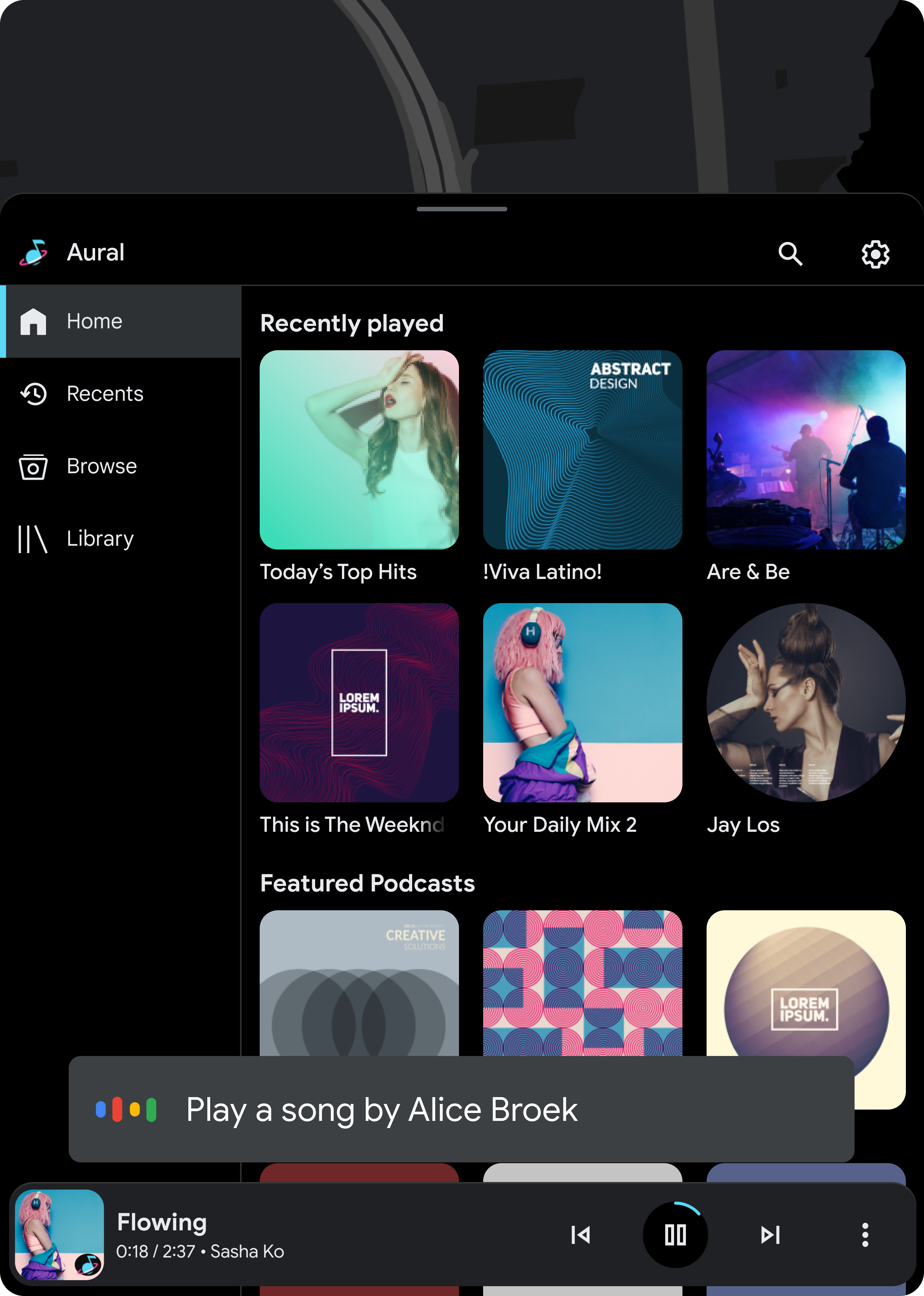AI-generated Key Takeaways
-
Supporting voice actions allows users to control media hands-free through Google Assistant, enhancing safety by reducing visual distraction.
-
Google Assistant can be invoked using hotwords, steering wheel buttons, or onscreen options to recognize requests for playing, pausing, or skipping media.
-
To optimize voice actions, decide which media categories to support and how to handle non-specific requests.
-
App developers should support voice actions for all appropriate media categories.
Supporting voice actions helps users find and play media by talking to Google Assistant, so they can keep their eyes on the road.
Google and car makers control how users invoke Google Assistant, typically via hotword (“Hey, Google” or “Hey, G”), steering wheel button, or onscreen affordance. Once invoked, Google Assistant can recognize requests to play app-supported categories of media, as well as requests to pause media play or advance to the next track.
To optimize the voice experience for your users, you need to:
- Decide which media categories to support. Possible categories for voice actions include genre, artist, album, playlist, and title. Choose those that make sense for your app.
- Anticipate non-specific requests. Decide how you want your app to respond to requests that don’t ask for specific media content, such as “Play some music.”
Voice plate example

Voice action requirements
In the table below, SHOULD requirements are recommended but not required.
| Requirement level | Requirements |
|---|---|
| SHOULD | App developers should:
|
Rationale
- Minimize visual distraction: Users controlling media via voice can keep their eyes on the road.